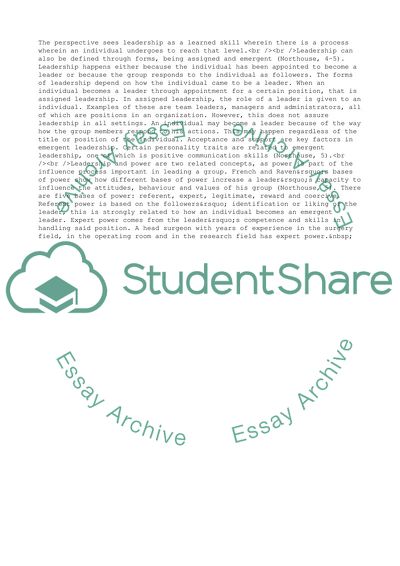Cite this document
(Theory and Practice of Leadership Essay Example | Topics and Well Written Essays - 1750 words, n.d.)
Theory and Practice of Leadership Essay Example | Topics and Well Written Essays - 1750 words. https://studentshare.org/management/1746808-leading-in-a-changing-world-understanding-the-learning-outcomes-assessment-criteria
Theory and Practice of Leadership Essay Example | Topics and Well Written Essays - 1750 words. https://studentshare.org/management/1746808-leading-in-a-changing-world-understanding-the-learning-outcomes-assessment-criteria
(Theory and Practice of Leadership Essay Example | Topics and Well Written Essays - 1750 Words)
Theory and Practice of Leadership Essay Example | Topics and Well Written Essays - 1750 Words. https://studentshare.org/management/1746808-leading-in-a-changing-world-understanding-the-learning-outcomes-assessment-criteria.
Theory and Practice of Leadership Essay Example | Topics and Well Written Essays - 1750 Words. https://studentshare.org/management/1746808-leading-in-a-changing-world-understanding-the-learning-outcomes-assessment-criteria.
“Theory and Practice of Leadership Essay Example | Topics and Well Written Essays - 1750 Words”. https://studentshare.org/management/1746808-leading-in-a-changing-world-understanding-the-learning-outcomes-assessment-criteria.


